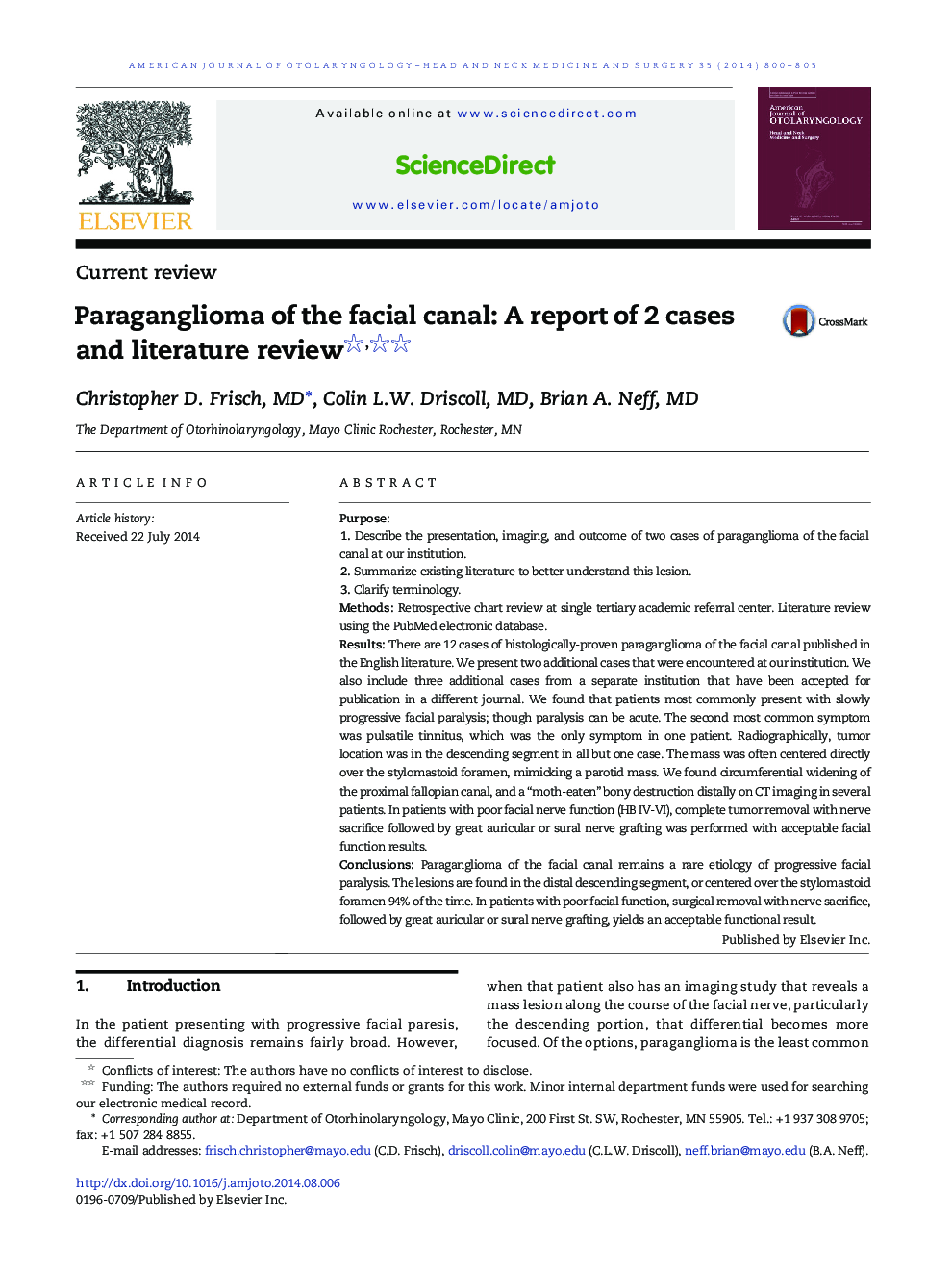| Article ID | Journal | Published Year | Pages | File Type |
|---|---|---|---|---|
| 4103676 | American Journal of Otolaryngology | 2014 | 6 Pages |
Purpose1.Describe the presentation, imaging, and outcome of two cases of paraganglioma of the facial canal at our institution.2.Summarize existing literature to better understand this lesion.3.Clarify terminology.MethodsRetrospective chart review at single tertiary academic referral center. Literature review using the PubMed electronic database.ResultsThere are 12 cases of histologically-proven paraganglioma of the facial canal published in the English literature. We present two additional cases that were encountered at our institution. We also include three additional cases from a separate institution that have been accepted for publication in a different journal. We found that patients most commonly present with slowly progressive facial paralysis; though paralysis can be acute. The second most common symptom was pulsatile tinnitus, which was the only symptom in one patient. Radiographically, tumor location was in the descending segment in all but one case. The mass was often centered directly over the stylomastoid foramen, mimicking a parotid mass. We found circumferential widening of the proximal fallopian canal, and a “moth-eaten” bony destruction distally on CT imaging in several patients. In patients with poor facial nerve function (HB IV-VI), complete tumor removal with nerve sacrifice followed by great auricular or sural nerve grafting was performed with acceptable facial function results.ConclusionsParaganglioma of the facial canal remains a rare etiology of progressive facial paralysis. The lesions are found in the distal descending segment, or centered over the stylomastoid foramen 94% of the time. In patients with poor facial function, surgical removal with nerve sacrifice, followed by great auricular or sural nerve grafting, yields an acceptable functional result.
